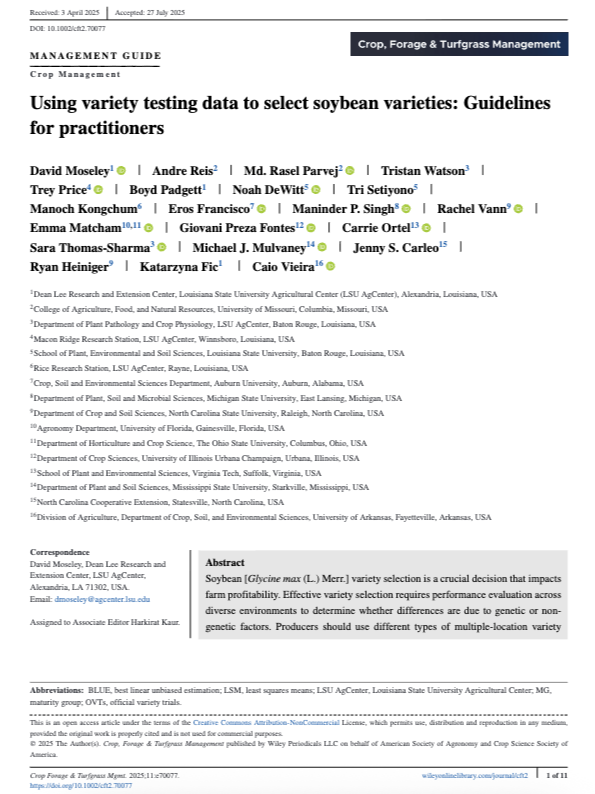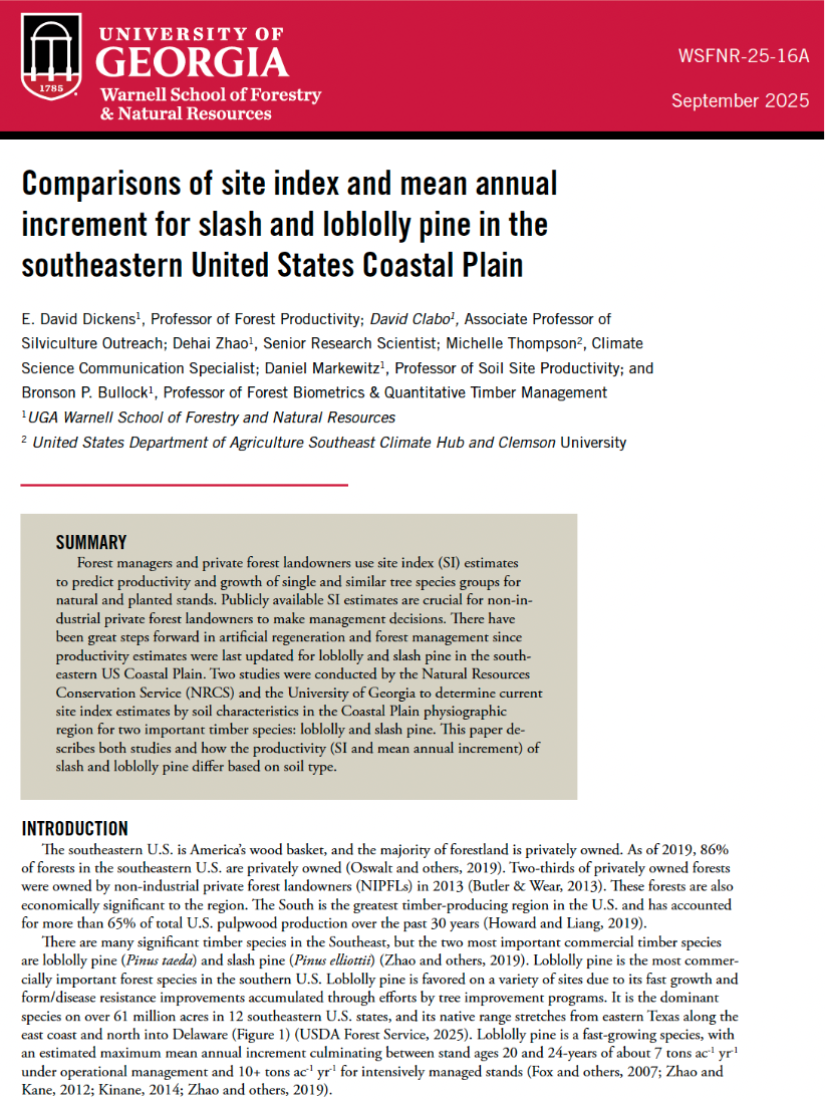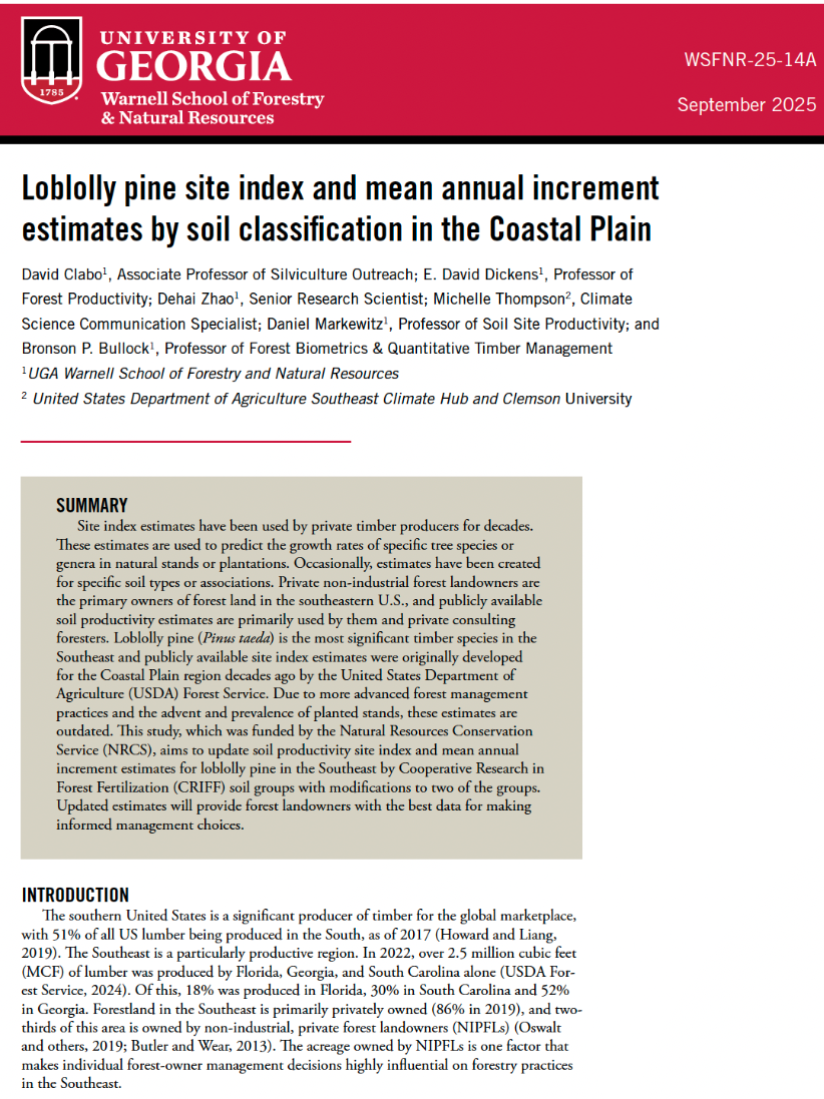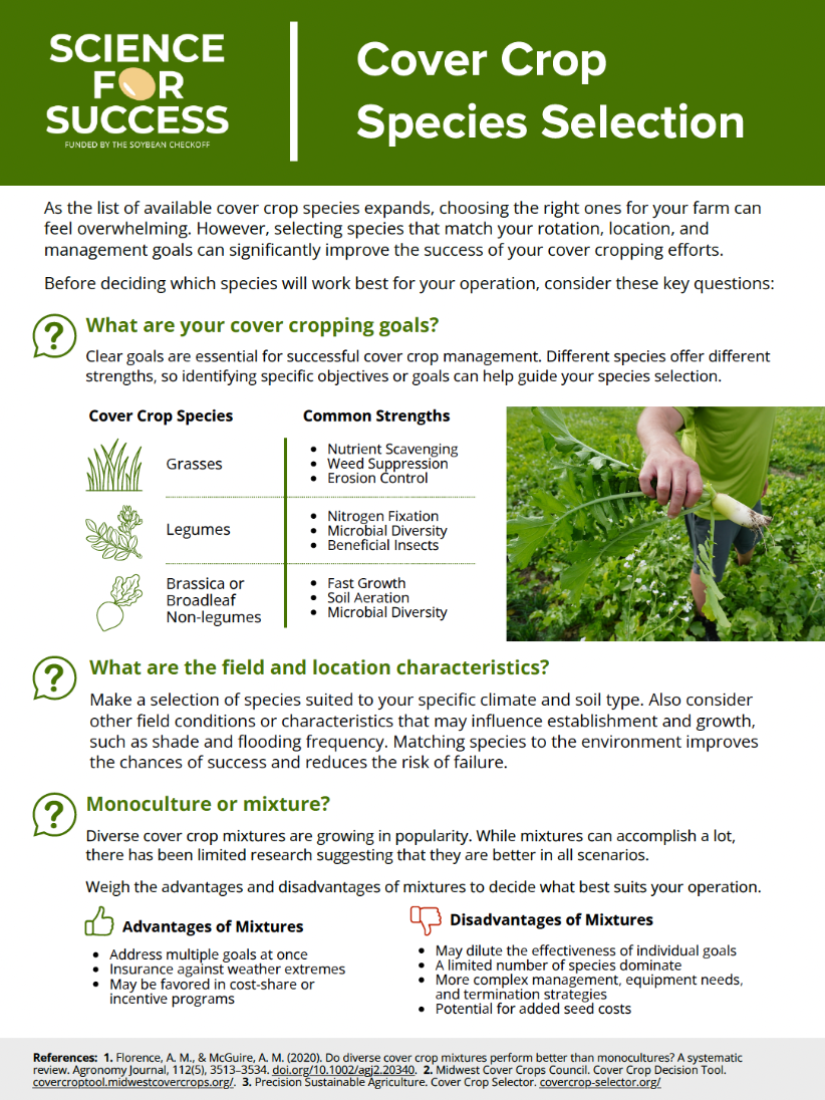
Using variety testing data to select soybean varieties: Guidelines for practitioners
Soybean variety selection is a crucial decision that substantially impacts farm prof-itability. Producers should prioritize varieties with high yield potential combinedwith resistance or tolerance to key biotic and abiotic stressors prevalent in theirregion. Soybean variety testing data are readily accessible through university exten-sion programs and seed companies. These data are ...

Conversations on Cover Crops with Greg McGlinch & Laura Lindsey
There are many decisions farmers must make when using cover crops. Greg McGlinch and Ohio State Soybean and Small Grain Specialist Laura Lindsey sat down to discuss some of these decisions. Learn more about Greg's approach to choosing what species to plant, how to plant, and more in this 2025 ...

Comparisons of site index and mean annual increment for slash and loblolly pine in the southeastern United States Coastal Plain
Two studies were conducted by the Natural Resources Conservation Service (NRCS) and the University of Georgia to determine current site index estimates by soil characteristics in the Coastal Plain physiographic region for two important timber species: loblolly and slash pine. This paper describes both studies and how the productivity (SI ...

Loblolly pine site index and mean annual increment estimates by soil classification in the Coastal Plain
This study aims to update soil productivity site index and mean annual increment estimates for loblolly pine in the Southeast by Cooperative Research in Forest Fertilization (CRIFF) soil groups with modifications to two of the groups. Updated estimates will provide forest landowners with the best data for making informed management ...

Exploring the Connection Between Soil Health and Soybean Yield
Soil health is a broad, multifaceted concept that underlines the importance of a soil’s capacity to function. Soil health tests are an imperfect way to quantify or characterize specific aspects of soil health. The connection between productivity (or yield) and soil health is strong, in theory. Though well-studied in corn, ...

Commercial biostimulant seed treatments showed minimal impact on soybean seed yield across the United States
The use of biostimulant seed treatments (BST) in soybean (Glycine max (L.) Merr.) is a growing market, with many different products and active ingredients (microorganisms) available. Companies promote the use of biostimulant seed treatment products by claiming several potential benefits to crop production, including seed yield increase. There are limited ...

Cover Crop Species Selection
As the list of available cover crop species expands, choosing the right ones for your farm can feel overwhelming. However, selecting species that match your rotation, location, and management goals can significantly improve the success of your cover cropping efforts. This factsheet walks through some important questions to consider when ...

Early Planting: Coaching Your Soybeans to a Gold Medal Harvest
In the same way that an athlete trains for a race, a soybean plant prepares for maximum yield in a growing season. As a farmer, you are the coach of your soybean crop, and you have one chance each year to win the gold. There are two phases of a ...

Soybean Nodulation and Inoculation
Soybeans have the greatest nitrogen (N) requirement per bushel among row crops, but biological N-fixation can provide 40-70% of the total soybean N requirement. This video goes over the importance of biological N fixation, factors that can compromise nodulation, and what to do if nodulation is unsuccessful.

Early Soybean Planting: Benefits and Risks
Improved crop management practices and genetics, coupled with a changing environment have led some farmers to shift their soybean planting dates earlier than the traditionally recommended planting dates. While planting time varies by geographic region in the US, most soybean farmers can do early planting without compromising yield potential by ...









